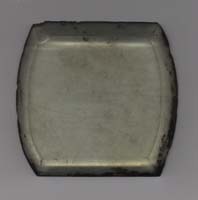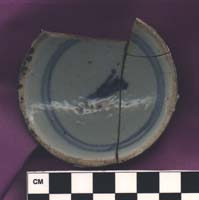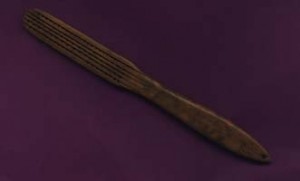Gung Hay Fat Choy! Happy Chinese New Year! This week was a special week for our project. On Tuesday, Connie Young Yu, historian and author of the book, Chinatown, San Jose, U.S.A., guest lectured in our Tuesday morning class. Connie Young Yu’s exhaustive documentary research into the history of Chinese Overseas communities in the Santa Clara Valley is augmented by personal interviews and family history. Her grandfather, Young Soong Quong, was a pioneer of San Jose’s Market Street Chinatown. He arrived at the Market Street Chinatown in 1881 at age 11 to work as a child laborer, first in a store and then as a house servant. Connie’s stories about her family and their acquaintances at the Market Street Chinatown put a human face on the artifacts that we are cataloging, and helped us better understand the community’s vibrant social life.

Materials used in cataloging: catalog record forms, archival polyethelene bags, liquid lacquer for labels, and marking pens and pencils.
In the discussion forum of this website, one message posted on January 14 asked, “what will be done with the artifacts once cataloged? With about 500 boxes this could take awhile.” This is a great question. We’re still not sure how long it is going to take to catalog the entire collection, so we are working through the collection in small batches. As artifacts are cataloged, we will have the collection inspected by a professional conservator to identify which artifacts might need special treatment to prevent deterioration. We also hope to develop a digital visual archive of the artifacts, which would put both the catalog database and pictures of the artifacts on a website. The artifacts themselves will be returned to History San Jose where they will be available to researchers and educators, and can be used in museum displays. We envision that the first group of artifacts might be returned to History San Jose before the end of the year.
Artifact of the Week
Gina cataloged these jade and imitation jade bracelet fragments last week. The imitation jade bracelets are manufactured from green-tinted glass, but over the years a light patina has altered the color of the glass surface. The only artifact that is true jade is the one on the far right. In a discussion comment posted earlier, Gina commented, “What is really interesting to me is that both jade and glass bracelets were found on the same site. I wonder what that might say about differences in class, or maybe everyday vs. special occasion jewelry. If anybody has any ideas I’d love to hear them.”







